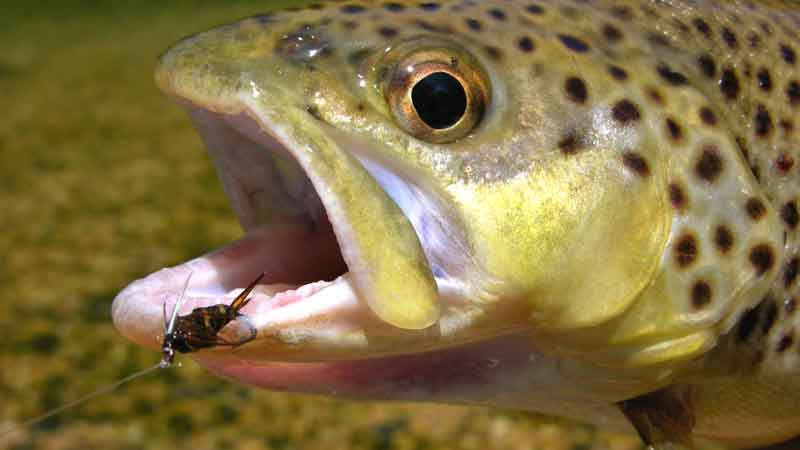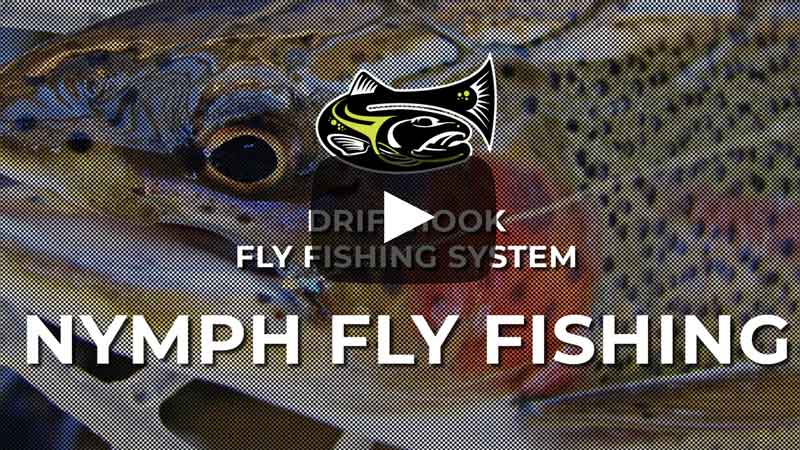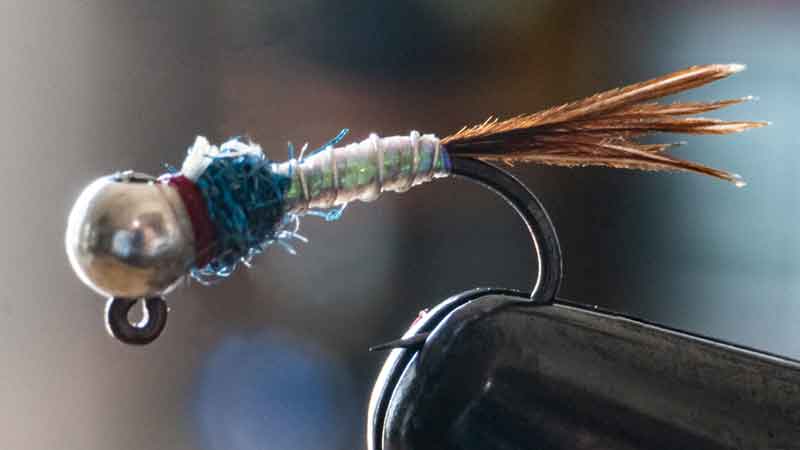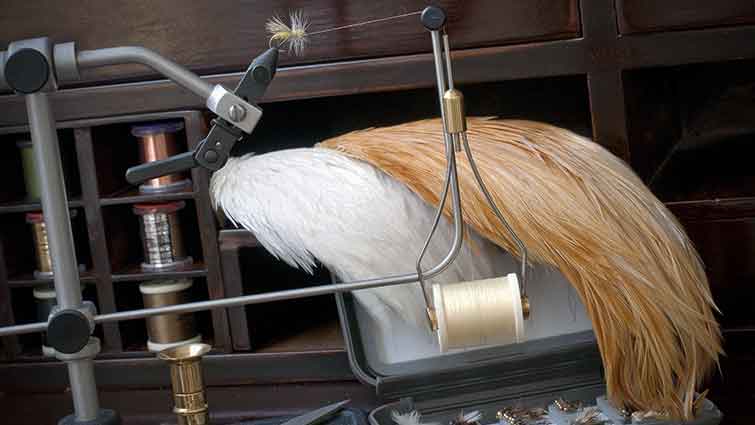The Prince Nymph is a timeless fly fishing pattern that has earned a place in anglers' fly boxes worldwide. Known for its effectiveness in attracting trout and other species, this fly mimics a variety of aquatic insects, making it an essential tool for fly fishers. Created by Doug Prince in the mid-20th century, the Prince Nymph has a rich history rooted in innovation and tradition. Its distinctive features, such as the biot tails and peacock herl body, make it a standout pattern that fish find irresistible.

This comprehensive guide will delve into the intricacies of tying the Prince Nymph, from the materials needed to the step-by-step tying process. Additionally, we will explore various Prince Nymph variations that can enhance your fishing experience, each tailored to specific conditions and target species. Whether you’re a seasoned fly tier or a novice, this guide will provide you with the knowledge and skills to tie this classic pattern effectively.
We will also cover proven techniques for fishing the Prince Nymph, ensuring you can maximize your success on the water. By understanding how to present and fish this fly, you’ll be better equipped to entice strikes and land more fish. So, gather your fly tying materials, and let’s embark on a journey to master the art of tying and fishing the Prince Nymph, a pattern that continues to captivate both anglers and fish alike.
What is a Prince Nymph?

The Prince Nymph is a type of artificial fly used in fly fishing. It is designed to imitate various aquatic insects that fish, particularly trout, commonly feed on. A nymph represents the underwater stage of an insect's life cycle before it emerges into its adult form.

Here are the key features that make up a Prince Nymph:
- Hook: It’s tied on a nymph hook, which has a curved shape to mimic the natural posture of an underwater insect.
- Tail: The tail consists of two brown goose biots (short, stiff feathers) that splay outwards, giving it a natural look.
- Body: The body is made from peacock herl, which has a shiny, iridescent quality that attracts fish.
- Ribbing: A thin wire, usually gold or copper, is wrapped around the body to add durability and create a segmented appearance like that of a real insect.
- Wing: Two white goose biots are tied on top of the hook to represent wings or legs of an insect.
- Hackle: A brown feather is wrapped around the front of the fly, creating a collar that mimics the legs of a nymph.
- Bead (optional): Sometimes a small bead is added at the head of the fly to help it sink faster and add a bit of flash to attract fish.
The Prince Nymph is renowned for its versatility and effectiveness in various water conditions. It’s an excellent pattern for both beginners and experienced anglers because it’s relatively easy to tie and works well in different fishing scenarios. By using the Prince Nymph, anglers can effectively target fish feeding below the surface, increasing their chances of a successful catch.
History of the Prince Nymph

The Prince Nymph is a classic fly pattern that has stood the test of time and is known for its effectiveness in attracting trout and other fish species. Originating in the mid-20th century, the fly was created by Doug Prince, a fly tier and angler from California. It was designed to imitate a variety of aquatic insects and has since become a staple in many anglers' fly boxes. According to Paul Schullery's "The History of Fly-Fishing in Fifty Flies," the Prince Nymph is one of the most iconic patterns, embodying the innovation and tradition of fly fishing.
Materials Needed for Prince Nymph

To tie a Prince Nymph, you'll need the following materials:
- Hook: Nymph hook, sizes 10-16
- Thread: Black or brown, 6/0 or 8/0
- Tail: Brown goose biots
- Body: Peacock herl
- Ribbing: Gold or copper wire
- Wing: White goose biots
- Hackle: Brown or furnace hackle
- Bead (optional): Gold or copper bead for the head
How to Tie Prince Nymph

Tying the Prince Nymph involves several steps, which are well-demonstrated in the video by Tightline Productions. Here's a summary of the process:
- Prepare the Hook: Start by placing the hook in the vise and, if desired, slide a bead onto the hook for added weight.
- Start the Thread: Attach the thread behind the eye of the hook and wrap it back to the bend.
- Add the Tail: Take two brown goose biots and tie them in at the bend of the hook, ensuring they splay outward.
- Add the Ribbing: Tie in a length of gold or copper wire at the bend.
- Create the Body: Secure several strands of peacock herl at the bend and wrap them forward to form a full, bushy body. Secure with the thread.
- Rib the Body: Wrap the gold or copper wire forward over the peacock herl body in evenly spaced turns, and secure it with the thread.
- Add the Wing: Tie in two white goose biots on top of the hook, angling slightly upward to create the wing.
- Add the Hackle: Select a brown or furnace hackle feather and tie it in just in front of the body. Make a few wraps to form a collar and secure it with the thread.
- Finish the Fly: Build up a small thread head, whip finish, and cut the thread. Apply a drop of head cement to ensure durability.
Prince Nymph Variations
There are several variations of the Prince Nymph, each tailored to different fishing conditions and target species:
Beadhead Prince Nymph:

This variation adds a bead to the head of the fly, which helps it sink faster and adds flash to attract fish.
Formerly Known As Prince:

This version includes a strip of flashy material, such as tinsel, along the back of the fly, increasing its visibility in the water.
Prince Nymph Jigged

The variant of the traditional Prince Nymph retains its iconic features: a peacock herl body, a white wing made of calf tail or synthetic material, and a brown hackle collar. It is tied on a jigged hook and designed barbless, aimed at reducing harm to fish and enabling effortless catch-and-release.
How to Fish a Prince Nymph
Fishing a Prince Nymph effectively requires understanding the basics of nymphing techniques, as outlined in the article from Drifthook. Here are some key strategies:
- Dead Drift: This is the most common technique, where the nymph is allowed to drift naturally with the current. Use an indicator to detect strikes and ensure your nymph is at the right depth.
- Swinging: Cast across and downstream, allowing the nymph to swing across the current. This can be particularly effective in faster water where fish are more aggressive.
- High Sticking: Keep the rod tip high and the line tight, allowing the nymph to drift close to the bottom in pocket water and riffles.
- Using a Dropper: Fish the Prince Nymph as part of a two-fly setup, with a smaller nymph or dry fly tied above it. This increases your chances of hooking fish feeding at different depths.
The Prince Nymph is a versatile and effective fly that should be a staple in every fly angler's box. By understanding its history, knowing the materials needed, mastering the tying process, exploring variations, and applying effective fishing techniques, you can increase your success on the water. Whether you're a seasoned angler or new to fly fishing, tying and fishing the Prince Nymph will enhance your fly fishing experience.





